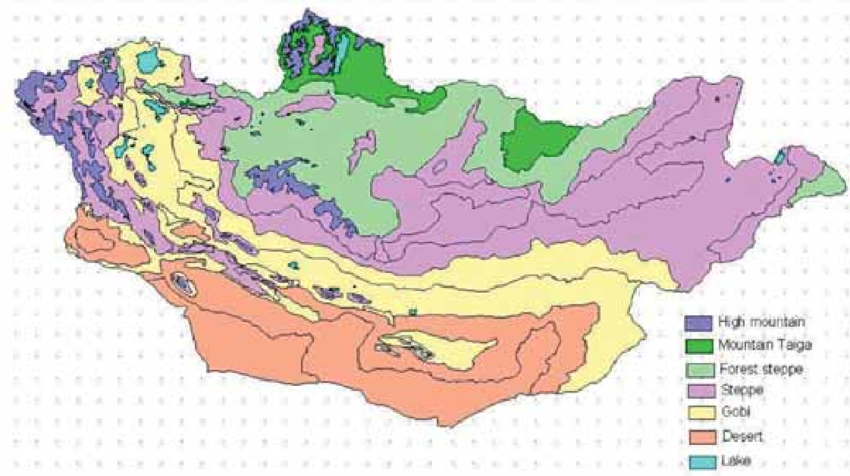Located in Eastern Asia and landlocked between its two huge neighbors, China and Russia, Mongolia is the world's 19th-largest country. The highest point is Khüiten Peak in extreme western Mongolia (4,374 m / 14,350 ft). Huh Nuur, or Lake Huh, in eastern Mongolia is the lowest point at 560 m / 1,840 ft. The country is at a relatively high altitude, with an average elevation of 1,580 m / 5,180 ft. The capital, Ulaanbaatar, lies at 1,350 meters. From the western to the eastern border of Mongolia is about 2,400 km, and from north to south, it spans about 1,260 km.
Mongolian has four basic vegetation zones:
the mountain forest,
the steppe
semi-desert
the desert.
The northern part of the country is covered with forests and mountain ranges, while the south holds the Gobi Desert, desert steppe, and steppe areas with low mountains. Western Mongolia features high snow-capped mountains and glaciers, while eastern Mongolia covers steppe plains and heaths.
Mountain ranges of Mongolia
Mongolia has three major mountain ranges.
- The highest, the Altai Mountains, stretch from the west to the southwest.
- The Khangai Mountain range occupies much of central and northern Mongolia.
- The Khentii Mountain range, northeast of Ulaanbaatar near the Russian border, is even lower.
Lakes and rivers of Mongolia
Mongolia has numerous lakes, the largest is Lake Uvs with an area of 3,350 square kilometers, Lake Khovsgol with 2.620 km, and Lake Khar Us with 1.852 km ². The largest rivers are the Orkhon (1124 km), the Kherlen (1090 km), and the Selenge (539 km)
The Gobi Desert
The Gobi Desert covers about one-third of Mongolia's surface and was a crucial part of the Silk Road.

